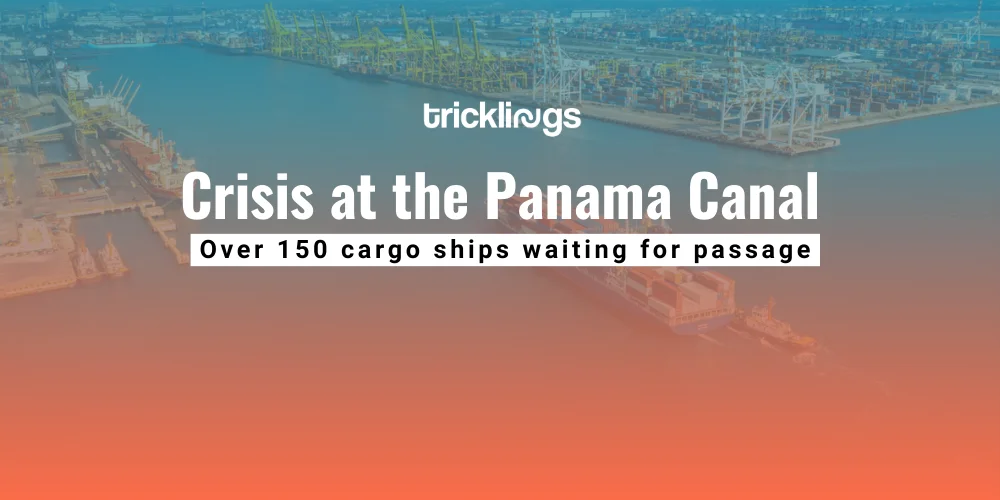The Panama Canal is experiencing a significant traffic jam, with over 150 cargo ships waiting for passage. Despite each ship willing to pay $4 million to cross the canal, authorities are not granting permission due to a crisis caused by an engineering marvel facing nature’s challenges. The canal’s closure could have global repercussions, as witnessed with the Suez Canal blockage in 2021. The canal’s importance lies in its ability to save time and fuel costs for shipping companies.
Main Coverage:
- Over 150 cargo ships are waiting for passage through the Panama Canal, willing to pay $4 million each.
- The Panama Canal faces a crisis due to an engineering marvel that encountered challenges from nature, leading to a significant traffic jam.
- The canal’s closure could have global repercussions, affecting shipping routes and increasing time and fuel costs.
- The Panama Canal is a crucial shortcut for shipping companies, significantly reducing distance and fuel costs.
- Despite high toll taxes and canal authorities’ challenges, utilizing the canal remains necessary for shipping efficiency.
- The canal’s operation involves complex lock systems and relies on freshwater from Lake Gatun, which sustains local populations.
- The Panama government faces a dilemma between operating the canal and providing drinking water to its people, as the canal closure affects its annual income of $4.32 billion.
- Measures to address the crisis include reducing the number of ships passing daily and prioritizing lighter cargo ships to conserve water in Lake Gatun.
- Proposals for alternative routes, like the Bay of Oceania corridor, are being considered but face challenges due to geographic constraints like the Andes mountain range.
Questions you may encountered:
How does the Panama Canal’s closure impact global shipping routes and costs?
The closure of the Panama Canal would disrupt global shipping routes, leading to increased time and fuel costs for shipping companies. This was evident in the 2021 Suez Canal blockage, which caused significant delays and financial losses for the shipping industry.
What measures are being taken to address the traffic jam and conserve water in Lake Gatun?
To address the traffic jam measures such as reducing the number of ships passing daily and prioritizing lighter cargo ships are being implemented. Additionally, efforts are underway to conserve water in Lake Gatun, including loading cargo more efficiently and reducing daily ship passages.
What are the challenges and feasibility of alternative routes, such as the Bay of Oceania corridor?
Alternative routes like the Bay of Oceania corridor face challenges such as geographic constraints, mainly the Andes mountain range. While proposals are being considered, infrastructure development and overcoming natural barriers pose feasibility challenges.
How does the Panama government balance the canal’s operation with providing drinking water to its people?
The Panama government faces the dilemma of balancing canal operation with providing drinking water to its people. Closure of the canal affects the government’s annual income, and using seawater in the canal risks contaminating Lake Gatun, a vital water source. Balancing these priorities includes reducing ship passages and prioritizing lighter cargo to conserve water.
What are the potential long-term solutions to ensure the smooth operation of the Panama Canal amid climate change challenges?
Long-term solutions may involve infrastructure improvements, water conservation measures, and exploring alternative routes. Efforts to address climate change challenges include adapting canal operations to fluctuating rainfall patterns and investing in sustainable water management practices to ensure the canal’s resilience in the face of environmental changes.
Panama Canal Facts:
- The Panama Canal faces a traffic jam with over 150 cargo ships waiting for passage.
- Each cargo ship will pay $4 million to cross the Panama Canal.
- The canal’s closure could have global repercussions on shipping routes and costs.
- The Panama Canal is a crucial shortcut, saving shipping companies time and fuel costs.
- The canal’s operation involves complex lock systems and relies on freshwater from Lake Gatun.
- The Panama government earns an annual income of $4.32 billion from the canal.
- Measures to address the crisis include reducing the number of ships passing daily and prioritizing lighter cargo ships.
- Alternative routes like the Bay of Oceania corridor are being considered but face geographic constraints.
- Climate change poses challenges to the Panama Canal’s operation, with uncertain rainfall patterns impacting water levels in Lake Gatun.














